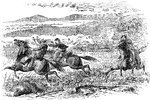
Confederates Crossing the Potomac
This sketch depicts the Confederates crossing the Potomac during the Maryland Campaign or the Antietam…

Battle of South Mountain
The Battle of South Mountain, also known as the Battle of Boonsboro Gap, fought on September 14, 1862…

Battle of Antietam
Scene by rail-fence, Antietam after the Battle of Antietam, also known as the Battle of Sharpsburg.…

Battle of Antietam
The Battle of Antietam, also known as the Battle of Sharpsburg, was fought on September 17, 1862, near…

Sunken Road at Battle of Antietam
The Sunken Road at the Battle of Antietam. The Battle of Antietam, also known as the Battle of Sharpsburg,…
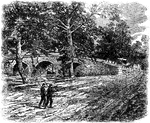
Burnside's Bridge
Burnside's Bridge is a landmark on the Antietam National Battlefield near Sharpsburg, Maryland. During…

Sunken Road at Battle of Antietam
Scene at the Sunken Road at the Battle of Antietam. The Battle of Antietam, also known as the Battle…

Siege of Corinth
The Siege of Corinth, also known as the First Battle of Corinth, was a Civil War battle fought from…

Battle of Perryville
The Battle of Perryville, also known as the Battle of Chaplin Hills, was fought on October 8, 1862,…

Union Uniforms
This sketch depicts Americans exchanging rags for U.S. Army clothing or uniforms to fight for the Union…

Borough of Chambersburg
Burning of the engine-house at Chambersburg. The borough was the only major northern community burnt…
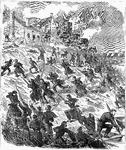
Battle of Fredericksburg
The Battle of Fredericksburg was fought in and around Fredericksburg, Virginia from December 11 to December…

Burnard's House
Alfred Burnard's house stood two miles below Fredericksburg, near the river. The Englishman's estate…

Doubleday's Skirmishes at Fredericksburg
Abner Doubleday (1819 - 1893) was a career United States Army office and Union General in the Civil…
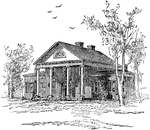
Marye House
The Marye House is located near Fredericksburg where skirmishes advanced towards during the Battle of…
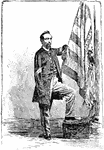
Sergeant Thomas Plunkett
Private Thomas Plunkett (1841 - 1885) was a color bearer during the Civil War. He carried the banner…

Battle of Stones River
The Battle of Stones River, also known as the Second Battle of Murfreesboro was fought from December…

Battle of Stones River Scene
Scene in the afternoon at the Battle of Stones River, also known as the Second Battle of Murfreesboro…

John C. Breckinridge
General John C. Breckinridge (1821 - 1875) was a lawyer, U.S. Representative and Senator from Kentucky,…

Battle of Baton Rouge
The Battle of Baton Rouge, also known as Magnolia Cemetery, was a ground and naval battle in the Civil…

Gunboats at the Battle of Baton Rouge
Gunboats at the Battle of Baton Rouge, also known as Magnolia Cemetery, was a ground and naval battle…

Destruction of the Arkansas
Destruction of the Arkansas during the Battle of Baton Rouge naval battle.

Giuseppe Garibaldi's Triumphal Entry Into Naples
The triumphal entry of Garibaldi into Naples. Garibaldi was an Italian military and political figure…
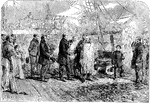
Giuseppe Garibaldi's Farewell Visit to Admiral Mundy
Farewell visit of Garibaldi to Admiral Mundy on board the "Hannibal" at Naples.
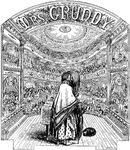
Mrs. Grundy Page Title
Title page made for Mrs. Grundy on Saturday July 8th, 1865. Mrs. Grundy was a short-lived periodical…

President Grant's Proposed Civil Service Reform
President Grant's proposed Civil Service Reform not to the taste of certain Senators.

Grant's Civil Service Reform
President Grant's Civil Service Reform is not to the liking of either party, despite enthusiasm.

Civil Rights Act of 1875
The Civil Rights Act of 1875 depicted with an African American talking to Saint Peter that he can't…
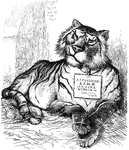
Republican Lamb Eaten by Democratic Tiger
Rutherford B. Hayes' policies strengthening the "Solid South" with the Republican Lamb being eaten by…

Cleveland's Civil Service Reform
Grover Cleveland's support for Civil Service Reform. "A gentle hint to office-seekers."
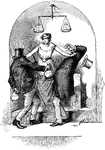
Justice for Briber and Bribed
Civil Service Reform is equal justice for both the briber and the bribed.
Sandstone
Along the south shore of Lake Superior is a sandstone once regarded as belonging to the Potsdam, but…
Garpikes Fish
The gars, or garpikes, are members of the Lepisosteiformes (or Semionotiformes), an ancient order of…
Garpikes Fish
The spotted Gar (Lepisosteus oculatus) is a primitive freshwater fish of the family Lepisosteidae, native…

Cataract Creek
Cataract Creek rises on the slopes of Mount Bullengarook and drains across the lava flow towards the…
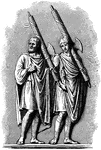
Roman Civil Servants
An illustration of two lictors, members of a special class of Roman civil servants. Lictors had special…

Oliver Cromwell
Oliver Cromwell (born April 25, 1599 Old Style, died September 3, 1658 Old Style) was an English military…
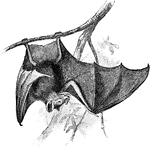
Leaf-Nosed Bat
"Glossophaga nigra. GLOSSOPHAGA. A genus of South American phyllostomine bats. These bats are provided…
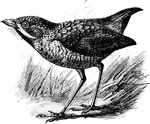
Antpitta
"Grallaria rex. GRALLARIA. A genus of formicarian passerine birds, a leading group of South American…
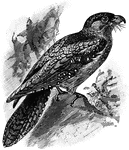
Oilbird
The Oilbird or Guacharo (Steatornis caripensis) is a bird in the Steatornithidae family, related to…

Guaco Branch
"Flowering branch of Guaco (Mikania guaco). GUACO. The Mikania Guaco, a climbing composite of tropical…

Guanaco
The Guanaco (Lama guanicoe) is a mammal in the Camelidae family of even-toed ungulates. It is a South…

Flag of South Africa, 2009
Color flag of South Africa. Two equal width horizontal bands of red (top) and blue separated by a central…

Flag of South Africa, 2009
Black and white outline flag of South Africa. Two equal width horizontal bands of red (top) and blue…

13 Star United States Flag, 1776
Color illustration of a 13 Star United States flag. The original 13 stars represent the states of Delaware,…

43 Star United States Flag, 1890
Color illustration of a 43 Star United States flag. The additional stars represent the states of Idaho,…

13 Star United States Flag, 1776
Black line illustration of a 13 Star United States flag. The original 13 stars represent the states…

43 Star United States Flag, 1890
Black line illustration of a 43 Star United States flag. The additional stars represent the states of…

Summer Solstice
"Relative positions of the earth and the sun on June 21, the summer solstice. Summer and long days north…

Winter Solstice
"Relative positions of the earth and the sun on December 21, the winter solstice. Winter and short days…
Spring Equinox and Autumn Equinox
"Relative positions of the earth and the sun on March 21 (spring equinox) and September 21 (autumn equinox)…
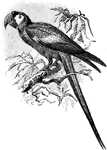
Macaw on Branch
Macaws are small to large, often colorful New World parrots. Macaws are native to Mexico, Central America,…

Canada Mayflower
An illustration of flowering plant of the Canadian mayflower, flower (a), and fruit (b). Maianthemum…
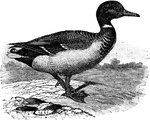
Mallard Duck
The Mallard (Anas platyrhynchos), probably the best-known and most recognizable of all ducks, is a dabbling…
